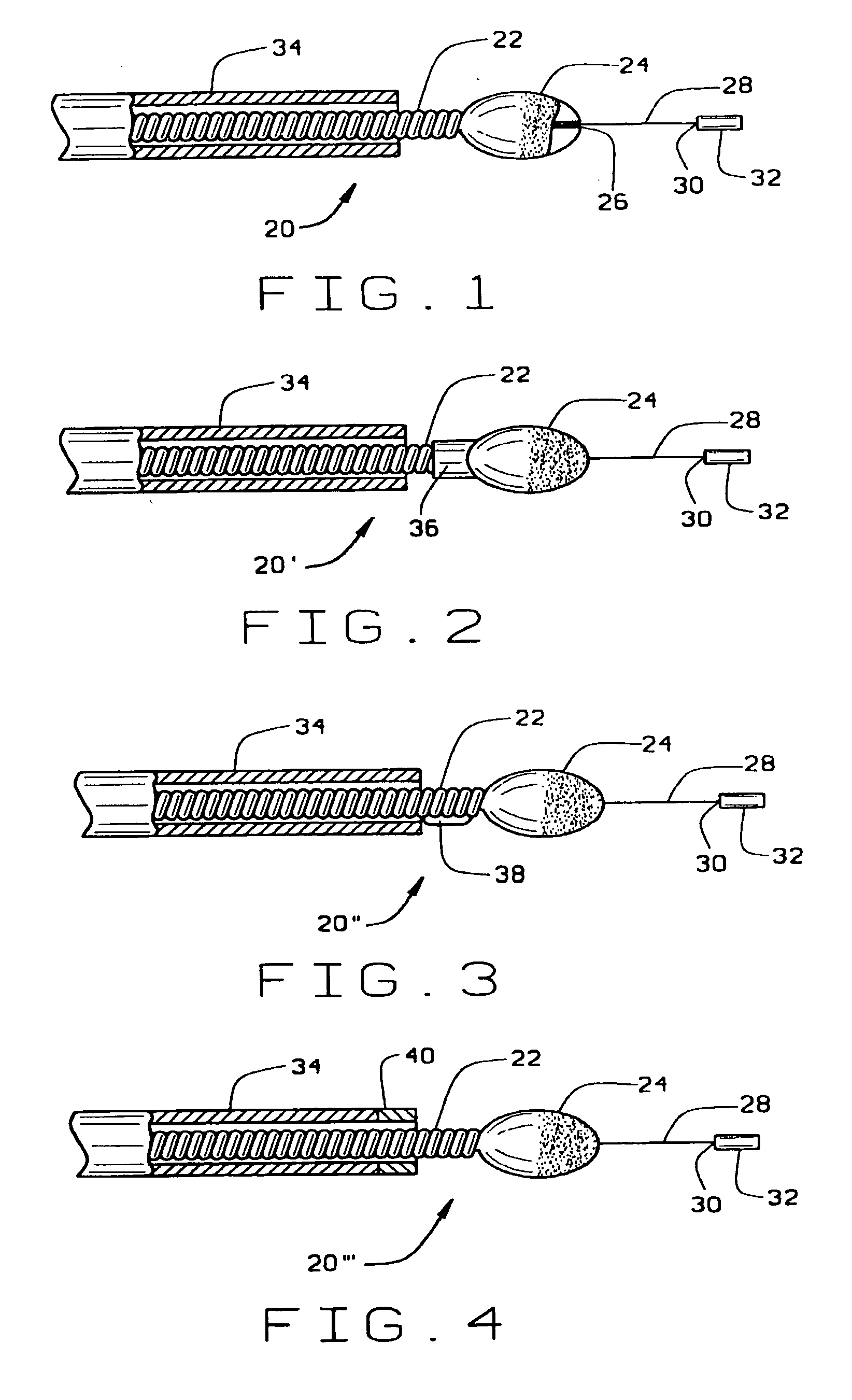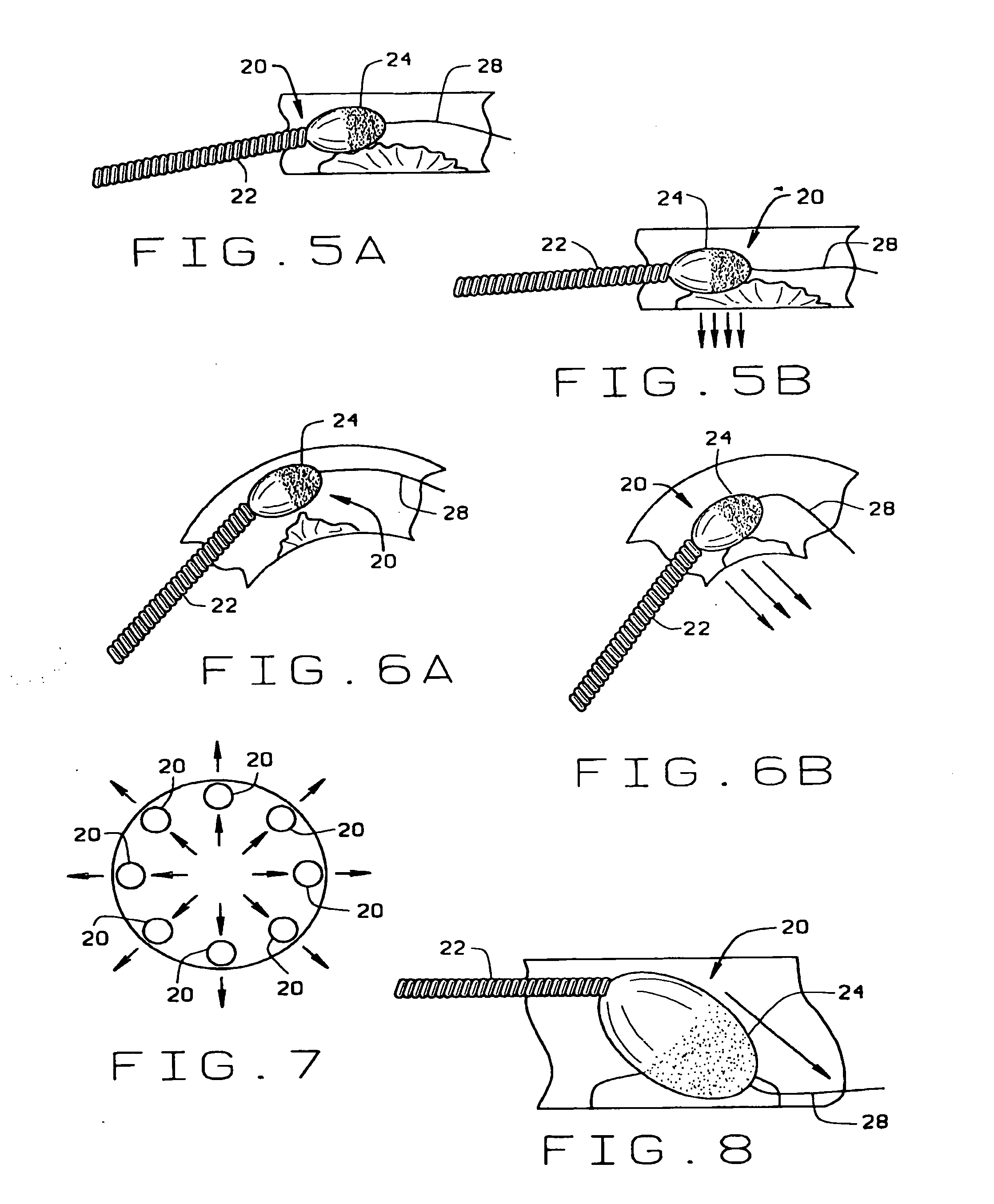Magnetically navigable and/or controllable device for removing material from body lumens and cavities
a technology of lumen and cavity, which is applied in the field of magical navigability and/or controllable devices for removing material from body lumens and cavities, can solve the problems of difficult to accurately control the atherectomy device satisfactorily, require great skill, and slow and tedious process of navigating guide wire through blood vessels, etc., to facilitate the navigation of the atherectomy device, facilitate orientation and/or movement of the guide wire, and facilitate the effect of guiding
- Summary
- Abstract
- Description
- Claims
- Application Information
AI Technical Summary
Benefits of technology
Problems solved by technology
Method used
Image
Examples
second embodiment
[0030] In accordance with this invention, shown in FIG. 9A and 9B, it is also possible that instead of, or in addition to, associating a magnetic with the cutting head, the atherectomy device can be used in conjunction with a magnetic guide wire 100, having a magnetic distal end portion. As shown in FIG. 9A, the guide wire 100 has a discrete magnet 102 on its distal end. As shown in FIG. 9B, the distal end portion 104 of the guide wire 100 is made from a magnetic wire material. The guide wire is then navigated to the diseased site. The magnet on or in the guide wire facilitate orienting and / or moving the guide wire through the blood vessels. Once at the site, the atherectomy device can be brought into close association with the magnet on the guide wire, and the magnet on the guide wire can be used to orient and to move the cutting head within the blood vessel.
third embodiment
[0031] In accordance with this invention, shown in FIG. 10, the atherectomy device can be used without any guide wire. The device is navigated solely by the application of magnetic fields and / or gradients, which apply a force through the magnet associated with the cutting head. One method of navigating such an atherectomy device is that disclosed in co-assigned U.S. patent application Ser. No. 60 / 095,710 filed Aug. 7, 1998, and incorporated herein by reference. In this method of navigation, the operating region in the patient is viewed on two planar fluoroscopic images of the operating region. The physician identifies the current position of the atherectomy device on each display, for example by using a mouse or similar device to point and click on the desired location. Similarly the physician can identify the desired new position of the atherectomy device on each display. A computer can control an electromagnetic system for generating an electromagnetic field and / or gradient for or...
PUM
 Login to View More
Login to View More Abstract
Description
Claims
Application Information
 Login to View More
Login to View More - R&D
- Intellectual Property
- Life Sciences
- Materials
- Tech Scout
- Unparalleled Data Quality
- Higher Quality Content
- 60% Fewer Hallucinations
Browse by: Latest US Patents, China's latest patents, Technical Efficacy Thesaurus, Application Domain, Technology Topic, Popular Technical Reports.
© 2025 PatSnap. All rights reserved.Legal|Privacy policy|Modern Slavery Act Transparency Statement|Sitemap|About US| Contact US: help@patsnap.com



